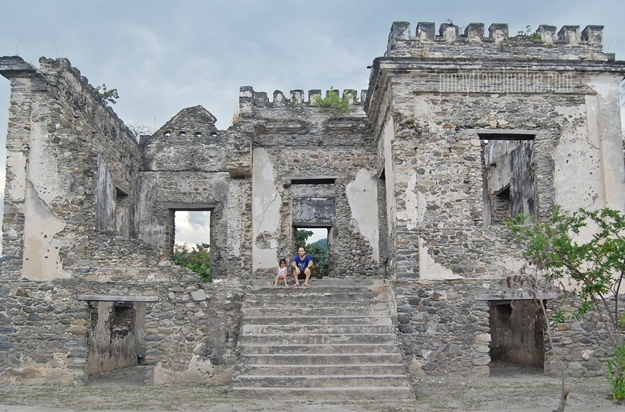The early afternoon sun was beating down on our grubby car as we made our way back to the capital. It was already our second day in East Timor yet our bodies were still adjusting to the climate of its hostile summer. Hubby and I were weary from the heat (our three-year-old Luna looked unfazed by it), but we requested our hired Timorese driver Abilio to do a brief stop at a site where we noticed — during our drive to Maubara Fort that morning — a cluster of ruins by the coast. It was along the way anyway.
Abilio, originally from the Oecusse District (separated from the rest of East Timor by West Timor), had traversed the Great North Coast Road several times but didn’t have an idea what it was. The travel guides online I browsed made no mention of it, and that piqued my curiosity even more. It bore no welcome sign. And was deserted when we arrived.
What we were to stumble upon was another cultural gem of East Timor’s Western Tourist Zone. A tourist destination lonesomely waiting for the attention it deserves. Eager to tell a story to the adventurers with keen ears.
That drive along the Great North Coast Road, from Maubara back to Dili.
Once in a while we would see children of this arid land roaming, seemingly aimless.
According to info boards, the ongoing exhibit at the time of our visit was temporary. A caretaker asked us to write our names on a page of a logbook. No fee was collected.
The State Secretariat of Culture, through the Directorate General of Culture and the National Directorates under its authority launched a musealisation project in the year that marks the 10th anniversary of the restoration of independence of Timor Leste (2012, when we visited the country).
The project aims to reacquaint the East Timorese population with (and introduce foreigners to) this historical building. In addition to the conservation of the structure, the museum will feature a permanent exhibition hall, a souvenir shop that sells local products, and a small cafe.
Constructed during the late 19th century under the supervision of the Portuguese, Ai Pelo Prison was in operation for the first half of the 20th century. It was decommissioned in 1939.
It is believed that Ai Pelo Prison was finally disabled in 1939 after heavy rains that fell on Dili and Licuiqa caused flooding and destruction of infrastructure.
In 1942 (World War II), Japan invaded East Timor. And parts of the old Ai Pelo Prison which survived the storms in 1939, were turned into a command post.
Ai Pelo Prison witnessed many atrocities during its period of existence as prison and military post. Prisoners were locked up underground, submerged in seawater up to their knees. Various forms of abuse afflicted the prisoners. One of the most common is mixing shattered glass with the prisoners’ food.
Bombed by the Australian and Japanese forces, Ai Pelo Prison was never rebuilt again.
Says on a panel at the exhibit, “The Ai Pelo Prison was etched in memory as a place of suffering. The inhabitants of Bogoro Lauhata village near the prison called it ‘Epelo’ which in local Tokodede language means ‘bitter water’… A clear allusion to the mistreatments inflicted at the former jail.”
Backpacking Timor Leste:
Case Of The Missing Mermaid Ariel Carry On
Backpacking Timor Leste (East Timor
Maubara Fort, East Timor: Stories Between The Cracks


Really fascinating photos! I love such old architecture.
Kelan kaya kami makakapunta dito. Two reasons why I want to visit Timor Lester are affinity to Portuguese and least visited country in ASEAN.
It’s unfortunate that it’s quite difficult to go there. Only a few flights. Hope you guys get to visit someday, I know you two will fall in love with East Timor 🙂
You’re the first travel blogger I’ve read who has been to East Timor. 🙂
East Timor is underrated. The least popular in Southeast Asia 🙁
Looks really cool. I’d love to go some time soon.